The Remarkable World of Carp
Carp conjures images of tranquil ponds, competitive angling, and rich cultural symbolism. Beneath the surface lies a fascinating story of evolution, adaptation, and ecological importance. This guide delves into the life of carp, exploring its natural history, behavior, and interaction with the environment and humanity. From identifying different species to understanding their role in ecosystems, prepare to discover the surprising world of these often underestimated fish.
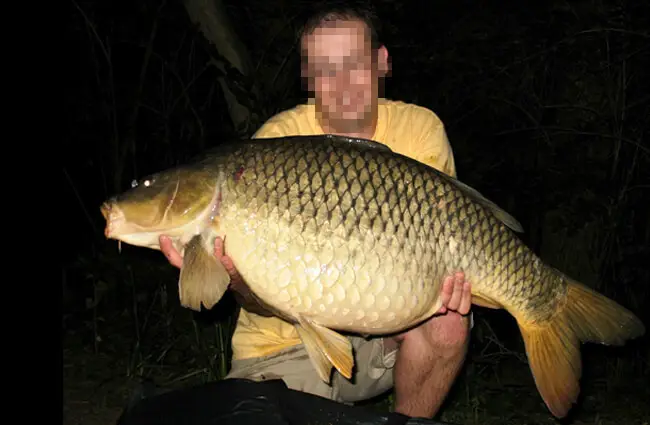
What Exactly is a Carp?
Carp belong to the family Cyprinidae, a large and diverse group of freshwater fish native to Eurasia. While “carp” can refer to several species, the term most commonly denotes the Common Carp (Cyprinus carpio). These fish are characterized by their robust bodies, prominent scales, and distinctive barbels around their mouths—sensory organs used to locate food in murky waters. Carp are bottom feeders that forage along the substrate of lakes, rivers, and ponds.
Distinguishing Carp Species
Beyond the Common Carp, several other species are frequently referred to as carp:
- Crucian Carp (Carassius carassius): Smaller and often more colorful than the Common Carp, Crucian Carp are also bottom feeders but prefer vegetated areas.
- Grass Carp (Ctenopharyngodon idella): As the name suggests, Grass Carp are primarily herbivorous, consuming aquatic vegetation. They are often used for biological control of weeds in ponds and lakes.
- Bighead Carp (Hypophthalmichthys nobilis) & Silver Carp (Hypophthalmichthys molitrix): These are filter feeders that consume plankton. They have become invasive in some North American waterways.
- Koi (Cyprinus carpio var. koi): Selectively bred domesticated forms of the Common Carp, prized for their vibrant colors and patterns.
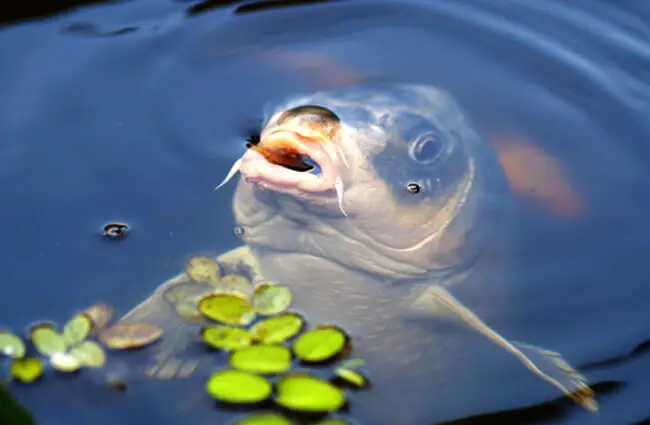
A Journey Through Time: Carp Evolution and Habitat
Evolutionary History
The evolutionary origins of carp trace back to ancient freshwater systems in Eurasia. The Cyprinidae family is one of the oldest and most diverse groups of freshwater fishes, with fossils dating back to the Eocene epoch. Carp, as we know them, evolved through adaptation to a variety of freshwater habitats, developing traits such as barbels for foraging and the ability to tolerate low oxygen levels. Their adaptability has been key to their widespread distribution.
Natural Habitat
Carp thrive in a variety of freshwater environments, including:
- Slow-moving rivers: Providing ample foraging opportunities and shelter.
- Large lakes and ponds: Offering expansive habitats and diverse food sources.
- Reservoirs: Man-made impoundments that can support large carp populations.
- Canals and ditches: Offering suitable habitats, especially in agricultural landscapes.
They prefer waters with muddy or silty bottoms where they can easily find food. Carp are remarkably tolerant of varying water conditions, including low oxygen levels and fluctuating temperatures. This resilience contributes to their success in both natural and altered environments.
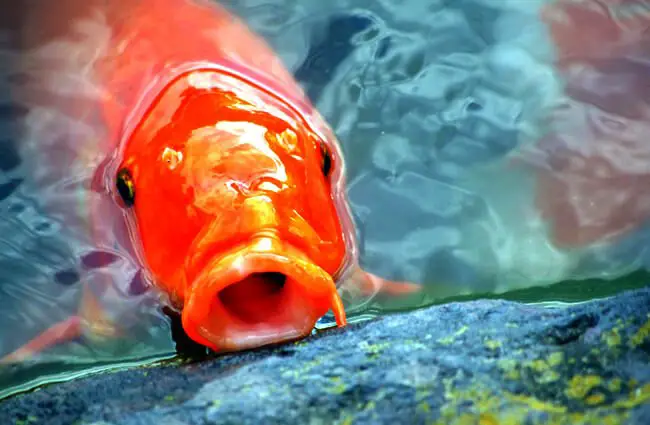
Carp Behavior and Ecology
Diet and Foraging
Carp are opportunistic omnivores, meaning they consume a wide range of food items. Their diet includes:
- Aquatic invertebrates: Insects, crustaceans, mollusks, and worms.
- Plant matter: Algae, aquatic plants, and decaying vegetation.
- Detritus: Organic debris that settles on the bottom.
- Seeds and grains: Especially in agricultural areas.
They use their barbels to locate food by sensing chemical cues in the water. Carp often root around in the substrate, stirring up sediment to find hidden food items.
Reproduction and Life Cycle
Carp typically spawn in the spring or early summer. They prefer shallow, vegetated areas with warm, slow-moving water. The female carp releases a large quantity of eggs, which are then fertilized by the male. The eggs are adhesive and stick to aquatic plants and debris. Carp eggs are vulnerable to predation, so a large number are often laid to ensure some survive.
The young carp, called fry, initially feed on microscopic organisms. As they grow, they transition to larger invertebrates and plant matter. Carp can live for many years, with some individuals reaching ages of over 20 years. They reach maturity at around 3 to 5 years of age.
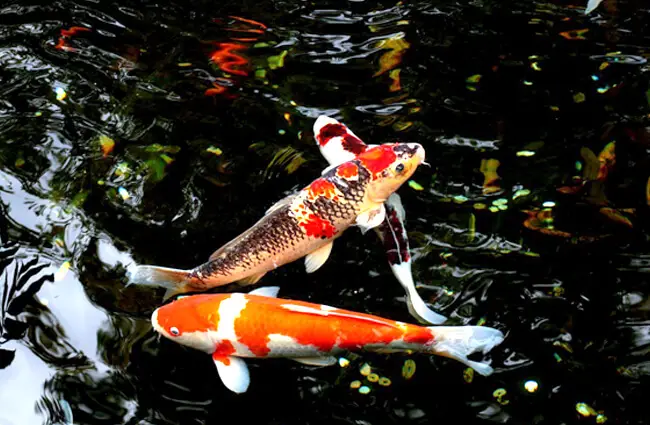
Carp and the Ecosystem
Carp play a significant role in freshwater ecosystems. As bottom feeders, they help to cycle nutrients and maintain water quality. However, their foraging behavior can also stir up sediment, increasing turbidity. In some ecosystems, carp can have a negative impact on native species. For example, they compete with native fish for food and habitat and can contribute to the decline of aquatic vegetation by uprooting plants.
The introduction of carp into new ecosystems can have particularly detrimental effects. Invasive carp populations can disrupt food webs and alter habitat structure. Management strategies aimed at controlling invasive carp include habitat restoration, stocking of native predators, and targeted removal efforts.
Carp and Human Culture
Carp hold a prominent place in the culture of many countries, particularly in Asia. In Japan, Koi carp are revered as symbols of strength, perseverance, and good fortune. They are often kept in ornamental ponds and displayed during festivals. In China, carp are associated with wealth and abundance, and are featured in traditional art and mythology.
Carp are also popular among anglers worldwide. They are known for their size, strength, and challenging fight. Carp fishing is a popular recreational activity, and tournaments are held throughout the year. Carp are a source of food in many parts of the world and are often prepared in a variety of traditional dishes.
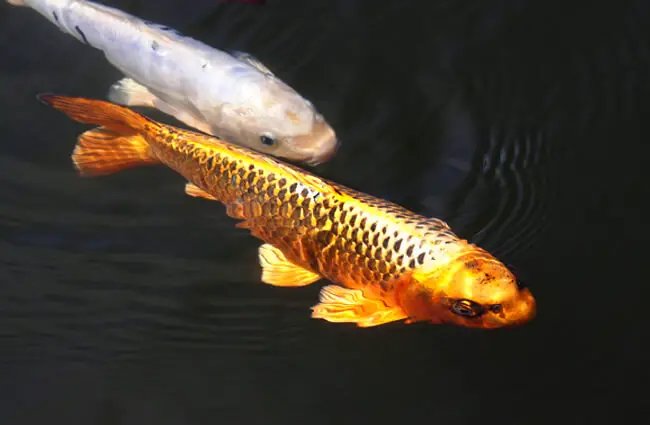
Interacting with Carp: A Guide for Hikers, Anglers, and Zookeepers
Encountering Carp in the Wild
If you encounter carp while hiking near a body of water, observe them from a distance. Avoid disturbing their habitat or feeding them. Remember that carp are an important part of the ecosystem, and it is essential to respect their natural behavior.
Caring for Carp in Captivity
For zookeepers and aquarium enthusiasts, providing appropriate care for carp requires attention to several key factors:
- Spacious enclosure: Carp need plenty of room to swim and forage.
- Clean water: Maintaining good water quality is essential for their health. Regular water changes and filtration are necessary.
- Balanced diet: Provide a variety of food items, including commercial carp pellets, aquatic plants, and invertebrates.
- Substrate: Provide a soft substrate, such as sand or gravel, for them to forage in.
- Social interaction: Carp are social fish and should be kept in groups.
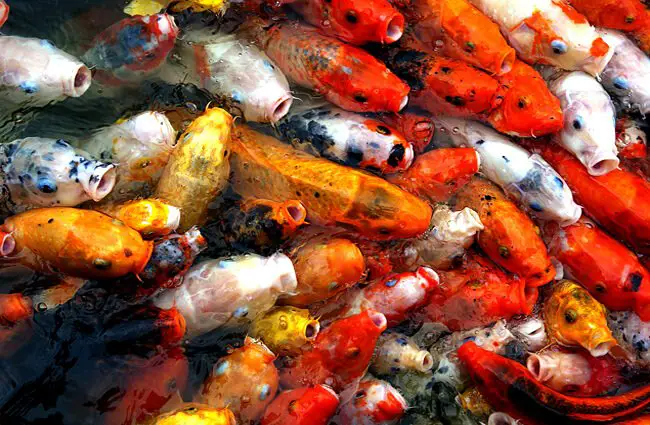
Fascinating Facts About Carp
- Carp can live for over 20 years in the wild.
- Some carp species can grow to over 100 pounds.
- Carp have excellent senses of smell and taste.
- Carp can tolerate low oxygen levels by gulping air at the surface.
- Koi carp have been selectively bred for over 1,000 years.
- Carp are a symbol of good luck and prosperity in many Asian cultures.
From their evolutionary history to their cultural significance, carp are truly remarkable fish. By understanding their biology, behavior, and ecological role, we can appreciate their importance and contribute to their conservation.

![Red Angus Closeup of a beautiful Red Angus cowPhoto by: U.S. Department of Agriculture [pubic domain]https://creativecommons.org/licenses/by/2.0/](https://animals.net/wp-content/uploads/2020/03/Red-Angus-4-238x178.jpg)




![Red Angus Closeup of a beautiful Red Angus cowPhoto by: U.S. Department of Agriculture [pubic domain]https://creativecommons.org/licenses/by/2.0/](https://animals.net/wp-content/uploads/2020/03/Red-Angus-4-100x75.jpg)

